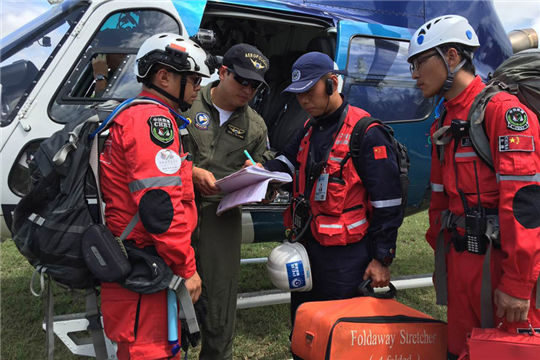

 |
|
The Dawning rescue team takes part in the rescue after earthquake in Ecuador in 2016. [Photo provided to chinadaily.com.cn] |
"Let the living have hope, let the deceased have dignity," many rescue team members embrace this belief. However, if there is no money, how long can the voluntary rescuers work?
Recently, information about crowdfunding by the Dawning rescue team spread throughout WeChat in Xiamen. It brought much attention to the team.
Where does the money for rescue mission come from? How much does it cost to dispatch a rescue team? A reporter raised these questions to Wang Gang, the team leader of the Dawning rescue team. Every rescue mission has to be paid for. Taking water rescue mission as an example, it is usually necessary to dispatch 10 lifeguards, 8 water salvage personnel, and a logistics support group. In addition, a vehicle and an assault boat are also needed. If the fuel fee and equipment loss are calculated, at least 2,000 yuan ($294) is required.
"Our rescue missions are varied. For a typhoon, we may have to dispatch thousands of people and spend hundreds of thousands of yuan," Wang said. In 10 days after Typhoon Moranti, the Dawning team rescued more than 1,900 people, spending a total of nearly 200,000 yuan.
In addition, professional equipment is also needed for safe rescue. "First, we must protect ourselves to better save people." Wang said about 70 percent of the funds is used on professional rescue equipment. "After every major mission, our team falls in debt."
Wang said: "In the early days of the rescue work, the team used the Dutch treatment, meaning the work was funded by the team members or friends. However, with the increase in the number of rescue missions, the team is unable to raise funds maintain normal operation, so we seek help from the society."
It is learned that the Dawning rescue team has three main sources of funds: self-raised funds, social donations, and lecture fees. Among them, social donations and self-raised funds accounted for more than 80 percent.
"A lot of vehicles and equipment are provided by the team members themselves. However, they never take the initiative to reimburse them."